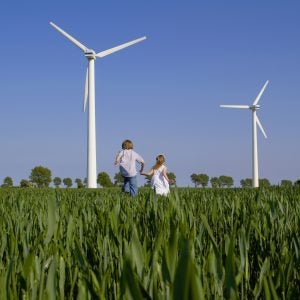 By Christie Hicks and Andrew Barbeau
By Christie Hicks and Andrew Barbeau
This post is the first in our CEJA series.
It’s been just over two years since Illinois enacted the groundbreaking Future Energy Jobs Act (FEJA), which set bold new goals for solar, wind and energy efficiency. Already, substantial gains from FEJA are being seen across the state.
But, a just-completed lottery for renewable energy credits demonstrates that there is a voracious demand for solar and wind energy in Illinois that far exceeds current capacity. Meanwhile, other states are poised to act on clean energy, threatening to catch up with – or pass – Illinois in the race for jobs and investments. This is the precise moment for Illinois to redouble its commitment to renewable energy and claim its spot as an undisputed clean energy leader.
The next important step for Illinois is passing the Clean Energy Jobs Act (CEJA), which will create more clean energy jobs, enhance equity and achieve more reductions in climate and air pollution. CEJA recognizes and addresses many of the challenges workers, customers and members of the community face as we transition away from old, dirty electricity.
CEJA will address the needs and concerns of fossil fuel energy workers and local communities
We know that coal plants are on their way out, but we don’t know when companies will choose to finally shut them down. That leaves hundreds of power plant workers and their families in an anxious limbo. In short, we can’t wait until these plants shut down to provide a path forward for our friends and neighbors.
CEJA includes Clean Energy Empowerment Zones that focus on communities that have relied on or have been affected by fossil fuel jobs and provide for a “just transition” to 100% renewable energy use. This includes new state economic development resources for new business tax incentives, workforce training, site clean-up and reuse, and help to ensure local tax revenue replacement.
This new bill is the next step on Illinois’ path to becoming a clean energy leader Share on XA “just transition” means that no communities will be left behind. In addition to preparing employees for new jobs, the empowerment zones address other economic issues, including protecting the tax base, funding schools and hospitals, and helping secure a vibrant local economy for years to come.
CEJA will reform the state’s energy markets
Recent proposals by the federal government and the regional grid operator, PJM Interconnection (PJM) threaten to drive out renewable energy from wholesale markets in favor of old and struggling fossil fuel power plants. That would force customers in Illinois to pay more for dirty energy we don’t want.
CEJA pushes Illinois in the other direction – ensuring that new clean energy resources displace dirty fossil fuel plants and eliminating overspending on expensive fossil fuel power plants that sit idle most of the year.
Northern Illinois electricity customers spend about $1.7 billion a year for “capacity.” Some of those plants are “on call” for just a few hours each year when demand is highest. For example, grid operator PJM purchased almost 33% more power plant capacity than needed in summer 2018 for everything outside of those “peak” periods. Those costs are, of course, passed on to customers, including northern Illinois ComEd customers.
Obviously, this is bad for consumers footing the bill for all that unused electricity. But the air pollution from this dirty electricity is also bad for the environment and the families who live near these power plants.
CEJA tackles this perverse expense head-on by redirecting that investment toward clean energy.
CEJA will result in more renewable energy
Demand for renewable energy in Illinois far exceeds the capacity developed under the Future Energy Jobs Act. For example, more than 900 projects participated in the Illinois Power Agency’s lottery for community solar projects this April. There was enough funding for 112 of them.
CEJA would steadily and significantly expand the number of solar and wind projects that could be approved each year, generating more than $30 billion in private investment, helping the state achieve its goal of 25% renewable energy by 2025, and putting the state on the path toward decarbonized electricity.
FEJA jumpstarted Illinois’ clean energy transition, and CEJA is a smart and critical next step. We encourage all Illinoisans to urge their legislators to pass this important bill by contacting them directly, engaging in social media (#CleanEnergyJobsAct, #ILCleanJobs) and signing a petition at www.ILCleanJobs.org.









